Brands know that compelling visual content has the power to educate, entertain and inspire their followers. On top of that, content-hungry audiences now expect top-notch visuals from the brands they love. This means marketers must deliver in a big way.
So how do creatives and marketing professionals navigate the growing demand for visual content? What are the biggest challenges when it comes to getting photos and videos out the door? What types of visuals produce the best results?
For the second year in a row, we’ve partnered with Contently to get to the bottom of these questions in the 2019 Report: Engaging Your Audience with Visual Content. Download the full report here.
You’ll walk away with some key insights on visual storytelling from over 1,000 marketers, including:
1. Speed is a critical factor when it comes to locating and sharing content.
In the report, we learn that 69% of marketers are sharing visual content at least once a day to engage their audiences online, which is up from 2018. Compared to previous years, the ability to locate and share visual assets quickly is also becoming more important to job success.
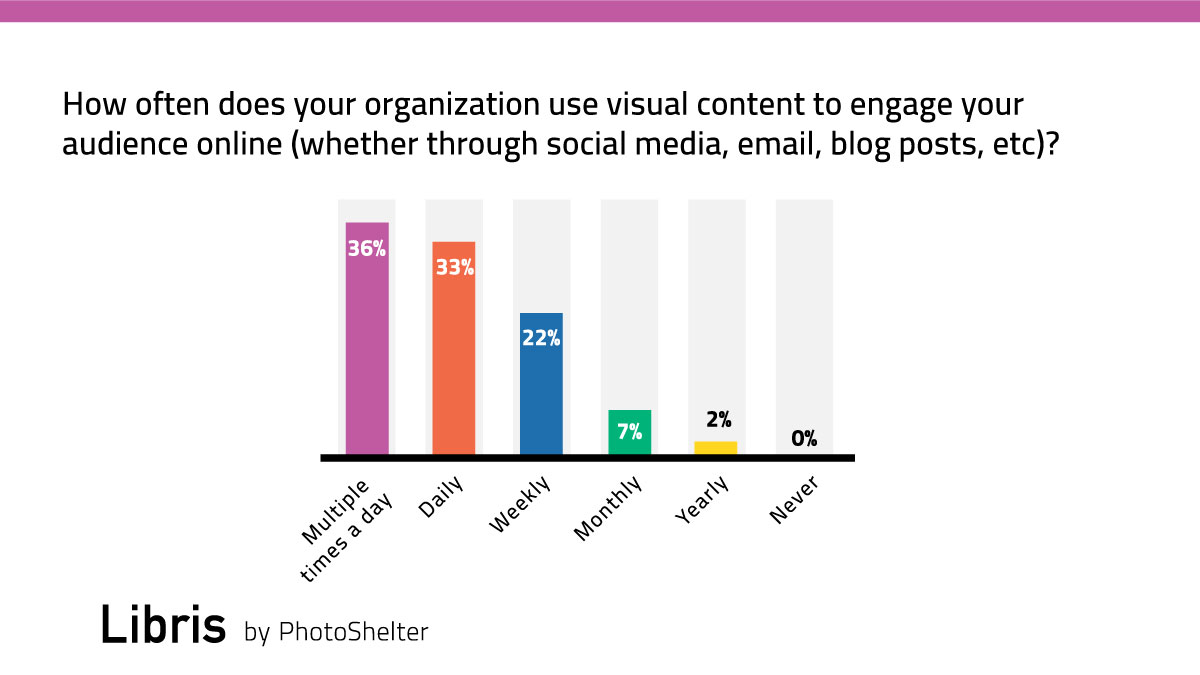
For those who care the most about speed, 80% use social media as their main channel for photos and videos. This suggests that as marketers strive to meet fast-paced demands of social media channels, the ability to locate and share content quickly becomes increasingly vital.
Likewise, 89% of marketers also say speed is “important“ or “very important“ when locating visual assets to share for marketing purposes. This is a 19-percent increase over 2018.
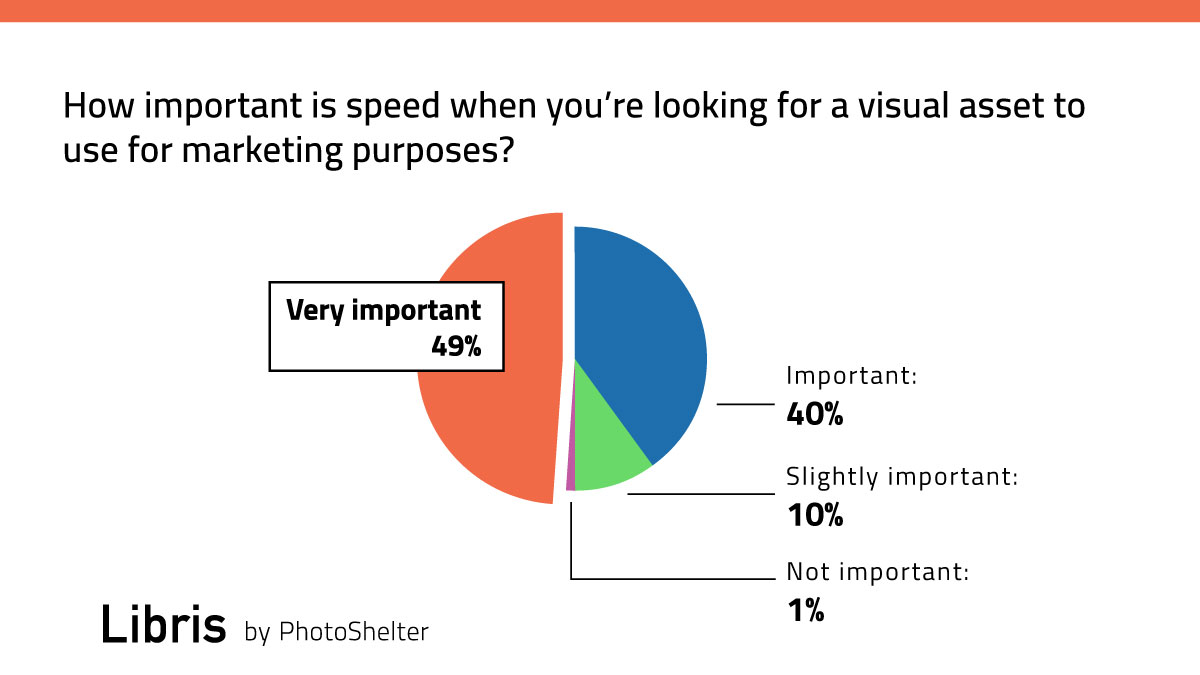
With the pace of visual storytelling on the rise, we predict this number will only continue to grow. Teams with a system in place to share stories quickly will be able to cut through the noise.
2. The need for video is growing.
The need for video is rising. 73% of marketers say their need for video is increasing, compared to 63% who say their need for photography is increasing.

This upward trend suggests marketers are turning to video content more to engage their audiences and stand out in a crowded marketplace.
Also, of those who rate their company’s video content “very good“ or “good,“ 72% turn to staff videographers and photographers to source content, suggesting that in-house talent produces higher quality content – and higher confidence in that content.
3. More brands are turning to in-house staff photographers and videographers.
Compared to 2018, we see a 13% spike in organizations who are relying on staff photographers and videographers for their content needs.
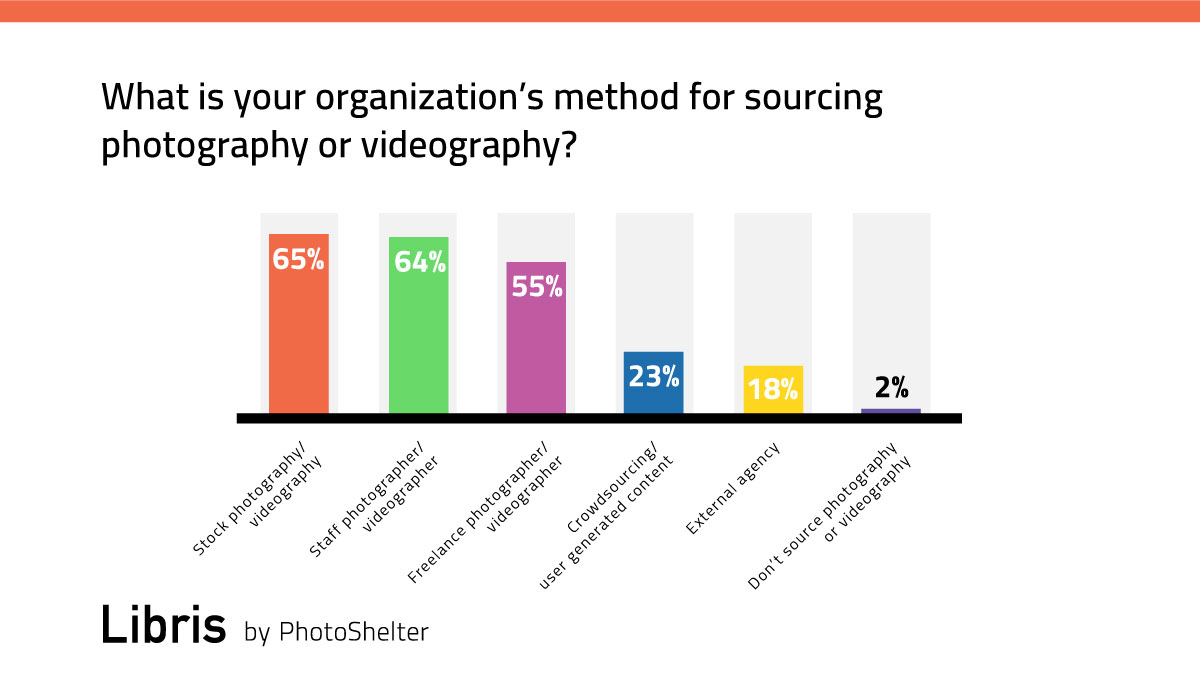
Full-time staff members who create photos and videos for your brand have a unique advantage. Because they are immersed in your company and culture, they can tell stories from your brand’s point of view. They have behind-the-scenes access to pull back the curtain while always keeping your company’s best interest at heart.
4. Custom video is getting easier to produce.
Compared to last year, we see a 10% drop among those who say custom video is the hardest visual content to produce.
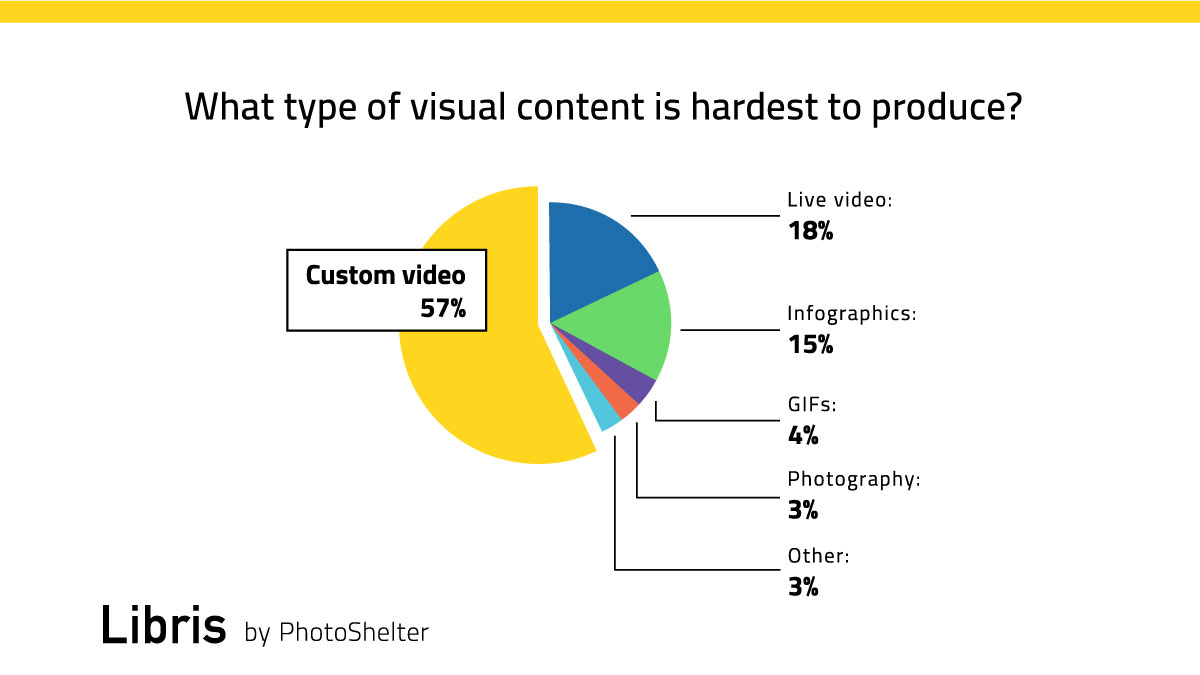
Given the 13% increase in the number of brands sourcing content from staff photographers and videographers, this change may suggest that bringing talent in-house helps streamline the production of visual content, including custom video.
5. Visual content is not going anywhere.
In case there was any doubt, visual storytelling is here to stay. We learned that 78% always use a visual when posting to the digital marketing channel that engages their audience most. And resoundingly, results with visuals are always better.
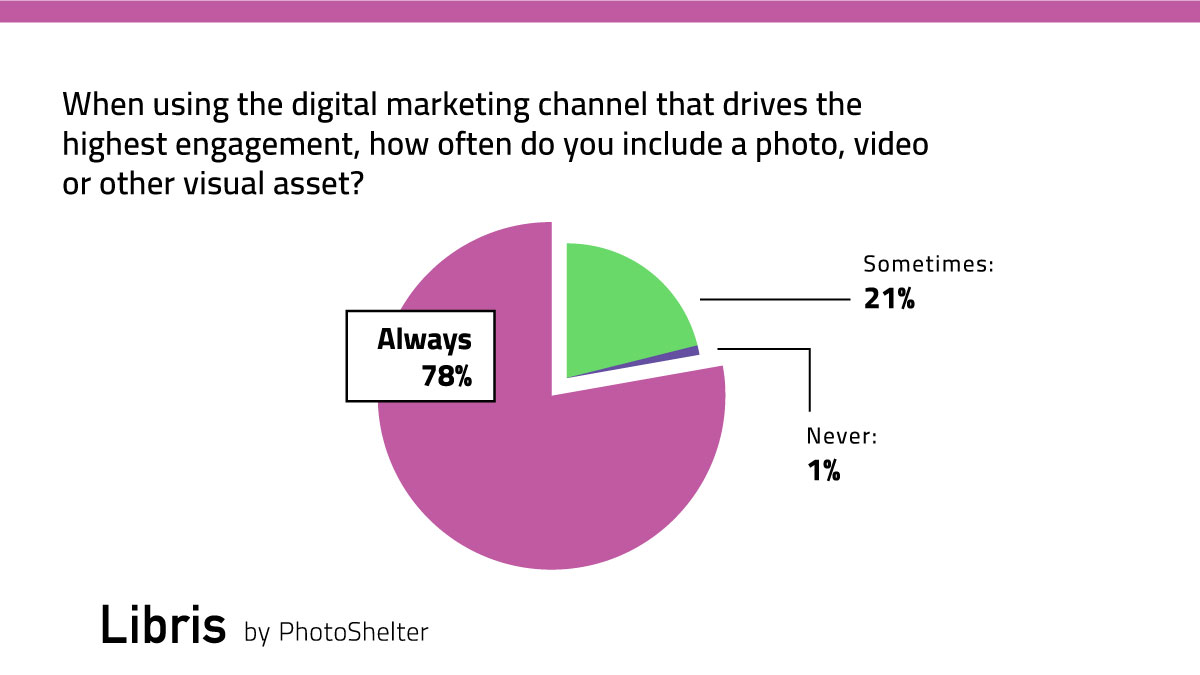
The Takeaway
We hope this report opens your eyes to an important perspective: in order to share meaningful visual stories, your team must have a strategy in place to streamline the production, organization and distribution of your creative assets.
Use these findings to check in on the state of visual content and see how you stack up compared to your peers.



